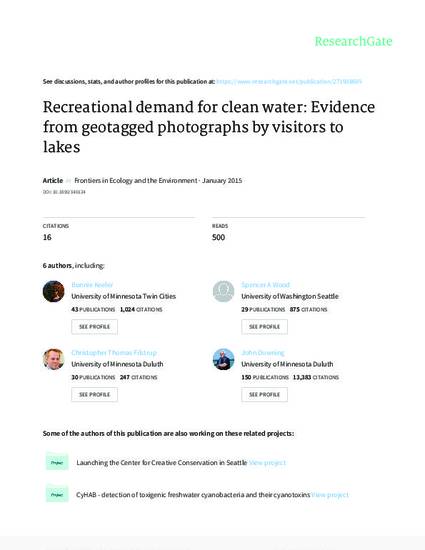
More than 41 000 water bodies are listed as impaired by the US Environmental Protection Agency under the Clean Water Act. Implementation and enforcement of regulations designed to address these impairments can be costly, raising questions about the value of the public benefits derived from improved surface water quality. Here, we assess the recreational value of changes in water quality using freely available geotagged photographs, taken by members of the public, as a proxy for recreational visits to lakes. We found that improved water clarity is associated with increased numbers of visits to lakes and that lake users were willing to incur greater costs to visit clearer lakes. Lake users were willing to travel 56 minutes farther (equivalent to US$22 in travel costs) for every one-meter increase in water clarity in Minnesota and Iowa lakes, when controlling for other lake attributes. Our approach demonstrates the potential for social-media data to inform social–ecological research, including assessment of the recreational benefits of improvements in water quality.
Available at: http://works.bepress.com/catherine_kling/110/

This is an article from Frontiers in Ecology and the Environment, 2015, 12(2); 76-81. DOI: 10.1890/140124. Posted with permission.